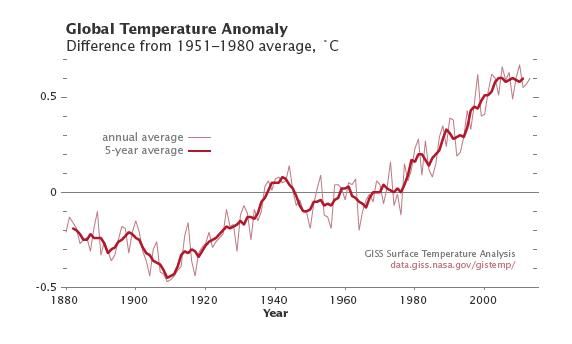Corals Show How Pacific Trade Winds Guide Global Temperatures
The world has been in a global warming hiatus, but that will change when the winds once again weaken
/https://tf-cmsv2-smithsonianmag-media.s3.amazonaws.com/filer/b8/89/b889fb33-a7d4-4e1f-8e0a-f1b80e8bd5e5/cr001359.jpg)
Earth has been warming since about 11,000 years ago, the end of the last glacial maximum. While the rate of warming went into high speed when humans began dumping large amounts of greenhouse gases into the atmosphere, the warming hasn’t been consistent. Some decades have seen faster temperature rises than others, and those differences haven’t corresponded with changes in the amounts of greenhouse gases emitted. Instead, the rate of global warming over the last century has been governed by the strength of the Pacific trade winds, according to a study published today in Nature Geoscience.
There are plenty of factors at play that influence global climate, most notably the rise in greenhouse gases. But when the Pacific trade winds are strong, as they are now, they mix more heat deep into the subsurface ocean. “As a result, less heat remains in the atmosphere, resulting in a slowdown of the warming,” says Diane Thompson of the National Center for Atmospheric Research.
“The Pacific flips and flops between states with weak and strong winds,” says Thompson. Global surface temperatures have barely risen since 2001, in what’s been called a “hiatus” for global warming. That's because the winds today are strong. However, “it's just a matter of time before the winds weaken once again,” Thompson says. And once that happens, “global warming will likely accelerate.”
The conclusion comes from an analysis of coral retrieved from the remote Pacific island nation of Kiribati. Corals add layers seasonally, and scientists can use those layers to determine how climate has changed over time. Thompson and her colleagues discovered that the Kiribati coral also records changes in the Pacific trade winds. Strong bursts from the west stir up sediments at the bottom of a lagoon near the coral, releasing the element manganese. The local corals then incorporate the metal into their skeletons. Those wind bursts are more common when the usually east-blowing Pacific trade winds are in their weak phase, so higher levels of manganese in a coral layer indicate a weakening in the trade winds.

The researchers analyzed a core sample taken from coral in Kiribati to reconstruct the history of the Pacific trade winds from 1894 to 1982. They verified their method by comparing the results to wind records from 1960 onwards, when the trade winds themselves started to be reliably tracked. From the coral, they could see manganese spikes—and thus weaker trade winds—from 1910 to 1940, a period when global temperatures rose rapidly. Temperatures leveled off until the 1970s, and there was a corresponding lack of manganese in the coral record.
“The latter period"—the mid-20th century—"serves as an analogue for the present-day slowdown of global warming,” Stefan Brönnimann of the University of Bern in Switzerland notes in an accompanying News & Views article. “Several studies have attributed the slow warming since about 1998 to a cool eastern equatorial Pacific and increased heat storage in the subsurface Pacific Ocean. This is due to strong easterly trade winds and associated with a predominance of La Niña conditions,” periods when equatorial waters in the Pacific are unusually cold.
Scientists cannot yet precisely predict when a new phase in the trade wind cycle will begin, Thompson says, “but we do know that the typical lifetime of a phase of this cycle is less than 30 years, and the current one began about 15 years ago. So although the timing of that switch remains difficult to anticipate, it would be most likely to happen within the next one to two decades.” And when that happens, the rate of global warming will take off once again.
/https://tf-cmsv2-smithsonianmag-media.s3.amazonaws.com/accounts/headshot/Sarah-Zielinski-240.jpg)
/https://tf-cmsv2-smithsonianmag-media.s3.amazonaws.com/accounts/headshot/Sarah-Zielinski-240.jpg)